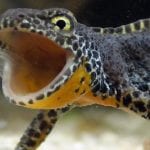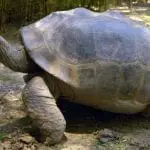Scientific Facts
| Common Name | Black Mamba |
| Scientific Name | Dendroaspis polylepis |
| Captive Life Span | 12-20 years |
| Size | Can grow up to 14 feet long (4.25 meters) |
| Habitat | Hollow trees, Rock crevices, burrows or empty termite mounds |
| Country of Origin | South and East Africa |
Physical Description

Although they are called Black Mamba, this snake species actually has a brownish color that may have hints of olive, and their bellies are usually of a pale color. The reason why they are named this way is that the inside of their mouth has a deep black coloration.
When they feel threatened or provoked, it can be seen opening its mouth, and it shows the black lining, and this will normally be the warning signal that predators need to back away. As unique as it may sound, their heads are shaped like a coffin, and they are very flexible and robust.
Their maximum length can reach up to 14 feet long (4.25 meters); however, most of them can only reach 8 feet (2.4m). In the wild, they can live up to 11 years.
Hunting and Eating Habits
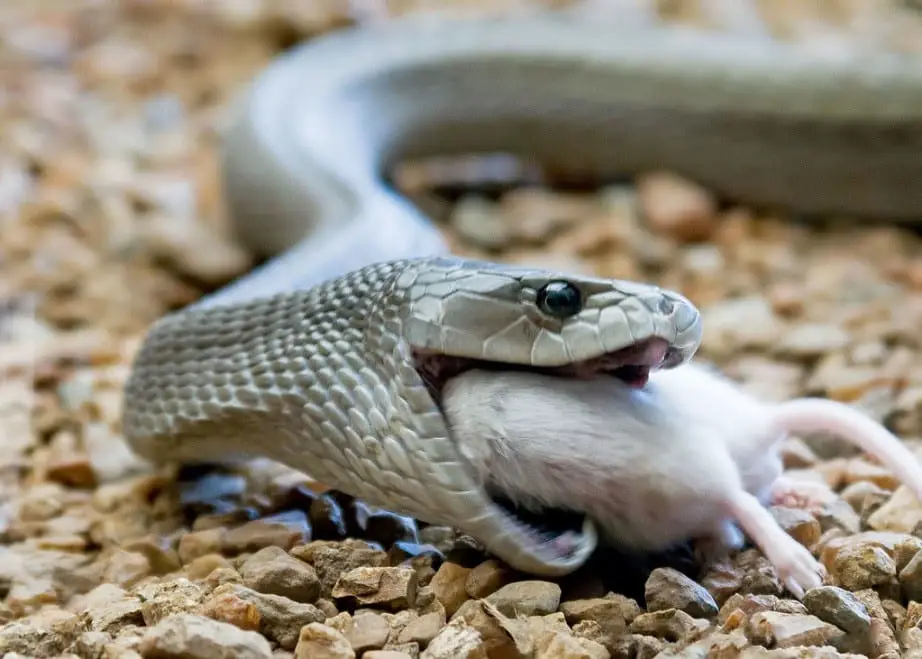
They can be seen typically feeding on small mammals and even birds, but while they are in the wild with a lot of food options to choose from, some of them were found to have full-grown cobras and even whole parrots in their bellies. Their feeding method will usually start by hunting their prey, injecting the venom then slowly releasing it.
One good indication that a Black Mamba is currently hunting for prey is that it’s moving very quickly, yet its head is lifted from the ground. The moment it sees its prey, the Black Mamba will stay still for a short period of time before it attacks. This will usually strike by giving the prey multiple bites and will eventually lead to killing the prey.
If the Black Mamba notices that the prey is still trying to escape, it will repeat the strikes, thus giving the prey more venom amount. They can also be seen following the prey until it becomes paralyzed and dies. This window of opportunity gives the Black Mamba its chance to devour their meal.
A prey that has been bitten by the Black Mamba will not live for a very long time, and the snake will usually consume their prey whole. Their jaws can be dislocated so that food of larger size will fit their mouths. They can feed on food up to four times bigger than their heads.
Their food options will normally range from small mammals like bats, squirrels, mice, and rats. They also have a preference for birds and other snake species, such as cape cobras.
Predators of the Black Mamba
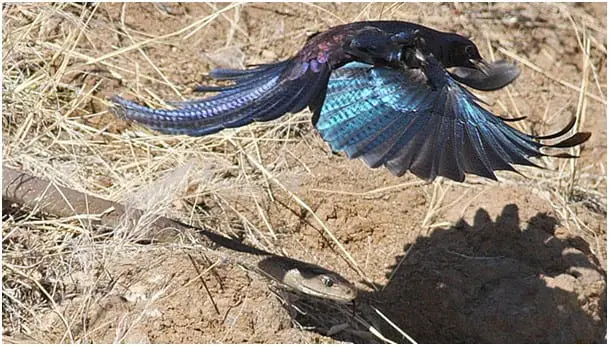
This powerful creature doesn’t really have too worry too much about having predators in the wild. However, there are one particular animal species that love to feed on a Black Mamba. This is the Mongoose. They are known to have a strong feeding preference for young snakes or their eggs, but it will be highly unusual to have them feed on a full-grown adult Black Mamba.
The Cape File Snakes can also be a predator in the wild. Still, humans are still the number one predator of Black Mambas. People will always think that the Black Mambas are dangerous, thus leading to the killing, and even their eggs are not given any mercy. Some humans have been destroying everything that is related to Black Mambas. They do this to lessen their population.
Black Mamba Snake Venom
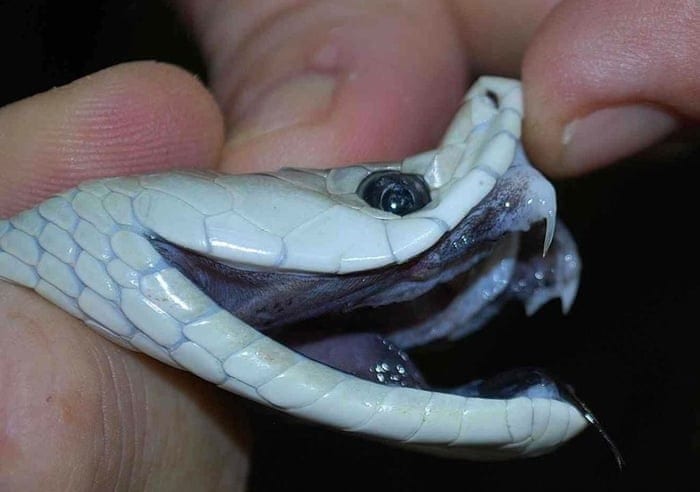
The Black Mamba belongs to the most venomous snake species that is crawling on earth. Compared to a Cape Cobra, their venom is more than three times. While in comparison with the famous King Cobra, their venom level is five times higher. They also have 40 times more venom power than a Gaboon Viper.
Their venoms contain very powerful neurotoxins that act very rapidly in the bodies of the victim. Their venom has been shown to change the normal activity of the nervous system. It also contains cardiotoxins that will usually cause heart muscle damage. The normal volume of venom it delivers is 100-120 milligrams, but in difficult situations, their venom volume can reach up to 400 milligrams.
10-15 milligrams of venom is already a fatal amount for an adult human. They will inject the venom by using their hollow fangs located at the front of its mouth. These fangs will usually lie flat, and the only time that they will erect is when the Black Mamba needs to bite on something.
Once the prey has been injected with the venom, paralysis will soon follow. The enzymes in their saliva will start with the digestion process even before they get into the stomach. They can easily digest their prey in just a few hours.
For bites in humans, symptoms will start with feeling a local pain in the bite area. The victim will then feel a tingling sensation in his extremities and will have drooping eyelids. He will also encounter having excessive salivation and sweating. Perhaps the most significant of the Black Mamba’s venom is not being able to control the muscles, and this is rampant in the mouth and tongue area.
If the victims are not given immediate medical attention, these symptoms will then lead to nausea, difficulty in breathing, possible confusion, and lastly, paralysis. If the venom is kept in the body for quite a long time, the victim will then deal with respiratory failure with convulsions, coma, and finally death.
The victim is likely to die because of suffocation since the muscles used for breathing have gone to paralysis. The mortality rate will always be 100% without any medical treatment. The Black Mamba’s venomous bite has been regarded with the highest mortality rate in the world; this is compared with all the other venomous snakes.
It should be expected that snakebite victims, especially those from venomous ones, should be treated as an emergency, and the treatment will include cardiopulmonary resuscitation (CPR). Medical professionals are often seen to apply a pressure immobilization device on the victim to ensure that he remains calm until proper medical help arrives on the scene.
It’s also not recommended to wash the snake bite as this might wash away the venom. The venom that is left on the victim’s skin is used to determine what type of snake is responsible for the bite. It’s also advisable to not cut the wound and suck the venom out by yourself.
Development and Reproduction
They will only breed for once a year, and their egg-laying season will normally occur in spring (October). During this time, the males will be seen fighting over the female, and these two snakes will usually go for a stand-off with each one trying to dump the head of the other on to the ground. This match can usually last for a few minutes, but in extreme fighting cases, their fight will last up to an hour.
The reason why they engage in this fighting behavior is that they need to gain the privilege of copulating with the fertile females. Just like most snake species, the Black Mamba leads a solitary lifestyle, and perhaps the only time that they interact with the other sex is during the mating season. While for the rest of the year, their normal behavior is to ignore each other.
Females will leave their scent on areas that they have crawled into, and this is followed by the male. Their copulation is marked by the make inserting of a hemipenis into the female’s genital tract. Once fertilization happens, the eggs will then develop in the mother’s body, and this will usually take about 60 days.
It’s also in this period that they will be seen searching for the most convenient place to lay their eggs. Abandoned termite mounds are usually their choice for this. They are capable of laying 15-25 eggs in just one laying and their incubation period will usually last for 60 days. It is also during this period that they become overly aggressive.
Their neonates will be at least 50cm long, and they are capable of becoming highly independent after hatching. Also, their venom is already in their bodies right after birth.
Communication and Perception
This snake species also show very little difference in how the other snakes communicate in the wild. Their eyesight is mainly used for spotting their prey; they use this for detecting even the slightest motion. Sudden movements will alert them to attack.
Their tongue, which acts as an extension of their mouth, collects particles suspended in the air, and these are eventually deposited inside the mouth. This method is responsible for detecting potential prey nearby.
Behavior
The Black Mambas are known to using their sight to discover motion, and when they see their potential dinner making rapid movements, they are immediately attacked. Although they don’t have ears, they can sense the ground vibrations with no issues.
In the wild, once the Black Mamba feels provoked, they will not attack immediately, but it will clearly give signs that it’s already preparing to strike. They also live a terrestrial, diurnal lifestyle, and this is combined with their ability to move at a very rapid speed and a unique crawling strategy.
They are also named the fastest terrestrial snake in the world, and they can be seen moving their bodies while their heads are lifted; by doing this, they are able to travel through large distances. They can be very territorial, and they become aggressive if someone tries to enter their territory. However, there will always be instances that they will avoid confrontations and just flee away from any predator they see.
When they are cornered, they will act like a cobra by raising about 1/3 of its body. They will hiss, spread their necks, and will open their mouth and revealing the black colors inside. If they see no sign that the predator is not backing down, they will also show no sign of hesitation to strike, and they may do this repeatedly.
Although they hunt and remain active all throughout the day when night comes, they still go back to the same place to sleep. Basking in the branches of the trees is the normal way for them to start their day, and they do this before they start hunting.
Although there will be times that they can be seen with pairs or even in small groups, but scientists will always remind us that these snakes are really shy. Their shy behavior leads them to be secretive, which avoids confrontations.
Their defensive behavior is the most researched about the behavioral characteristics of the Black Mamba. They can be seen moving from a speed of 11-19 km/h (7-12mph), but they can go faster at a 16-20 km/h on shorter distances. There was even one Black Mamba that has been studied, and it was found out that it can move with a 23 km/h speed.
Brumation Cycle
Just like any other cold-blooded animals, the Black Mambas are not capable of regulating their body temperatures; thus, low temperature makes them highly vulnerable. Some of them will have to deal with subfreezing temperatures in the wild, and most of them will go o the brumation stage as winter hits.
If the Black Mamba lives on mountains, their hibernating den is usually seen facing south since this receives more sunlight and is warmer. They have a higher risk of dying not just because of the extreme temperature, but skunks and badgers will typically unearth and feed on them.
Although they are in brumation, they are not inactive the whole time. They can be seen to be doing some activities during the day, and this usually happens when the warmest period of winters sets. Their movements and the energy they have is very limited during this season, but some of them are still seen basking in the warmer areas of their dens.
Shedding
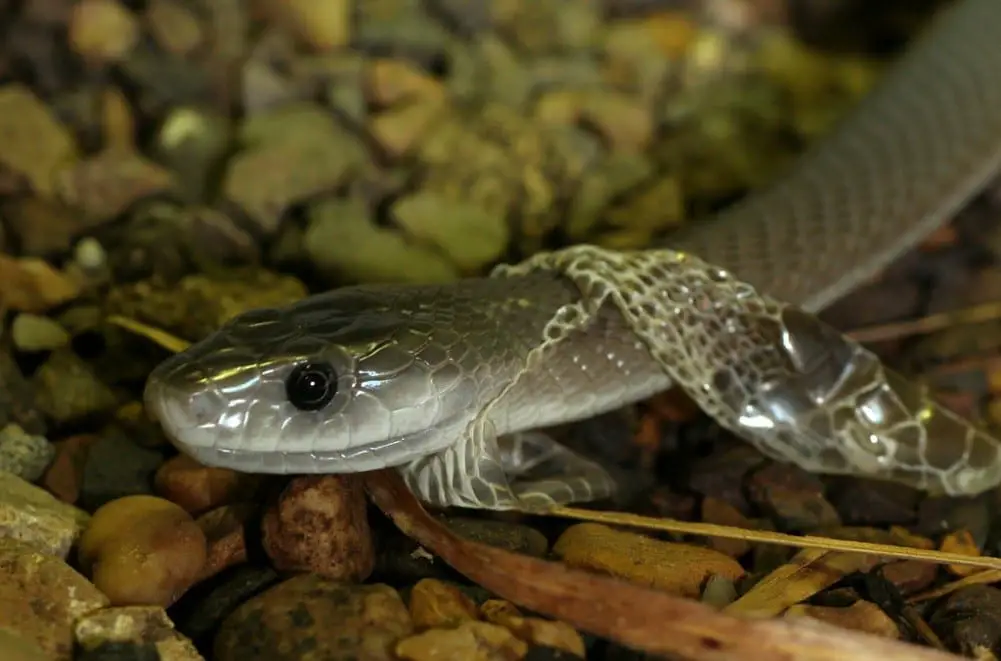
Black Mambas will undergo shedding just like any other snake species on earth, and they do this to allow continuous growth. Unlike animals that grow with their skin, the snake’s skin only has a limited capacity; that’s why shedding is needed. When they need to outgrow their skin, they will just shed the outer layer of their skin.
They will continue shedding as long as they are getting big, and the number of times that they shed will be dependent on how fast they grow. The younger ones are expected to grow at a faster rate compared to the adult ones.
Common Health Problems
Septicemia or Toxemia
This is probably the most serious disease that a Black Mamba can acquire. This happens when bacteria or other microbes invade the bloodstream and other body parts. Once your snake gets this disease, you should be informed that they are already in a critical stage, and they might die anytime soon. Symptoms of this may include having red discoloration on their stomach scales, refusing to eat, and open-mouth breathing.
Parasites
It’s not just external parasites that your snake is at risk of getting. Internal parasites exist, and they make the internal parts of the snake as their host. These will usually have no clinical signs unless the snake undergoes an annual physical examination or fecal tests. Parasites may lead your snake to experience regurgitation, itching, skin infection, mouth rot, having difficulty breathing, and their internal organs have swollen up.
Respiratory Infections
This is normally associated with mouth rot and is caused by bacteria. Common symptoms of respiratory infections will be excessive mucus and nasal discharge, refusing to eat, and feeling lethargic.
Infectious Stomatitis (Mouth Rot)
This is easily seen on the gums of the snake paired with an excessive amount of thick mucus. These can contain blood or pus. This oral cavity infection might cause the snake to have a severely swollen mouth, and they can be seen breathing through their mouths. Poor husbandry or injury to the mouth are the usual causes of mouth rot.
Blister Disease
Blisters can often be seen in snakes that live in enclosures that either too moist or too filthy. This pus-like blisters can be easily infected by bacteria, and it will eventually lead to severe skin damage, blood poisoning, and death.
Habitat
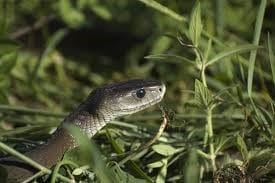
It has been established that the Black Mamba lives in Southwest Africa, but studies still need to confirm if they also live in Central and East Africa, there have been rumors that they can also be located in these areas, but there’s still no confirmation.
They are known to be well-adaptive to their environment; in fact, they can thrive on the savanna, croplands, swamps, bushes, meadows, thick rainforests, and rocky slopes. They have a strong preference for dry environments, and they can be seen living termite mounds and hollow tree trunks.
The termite mounds serve as the perfect shelter in the wild since it gives the Black Mamba protection against excessive heat. This also gives the mamba a natural air conditioning system because of the complex network of holes, tunnels, and shaft it has.
Temperature and Humidity
Their enclosures should have a temperature gradient in different parts to ensure that optimum temperature is given. The cool end should have a temperature of about 74 degrees. Fahrenheit, while the warm area should have 84-86 degrees. A basking spot with a 94-100 degrees temperature is needed to help them with thermoregulation.
Since they are active the whole year round, breeders should ensure that they are given proper temperature, humidity, and light schedule to stimulate brumation or breeding. You need to provide these to them at all times.
Tank Bedding and Accessories
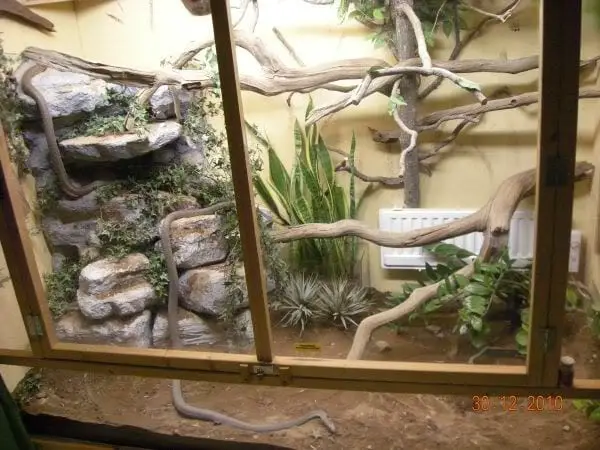
Hatchlings and young ones should be kept in an enclosure that a 20-50-gallon capacity while the adult one can be kept in a 125-gallon capacity tank. Keep in mind that the larger their enclosure is, the better as this will allow them to explore.
Ensure that their enclosures are well-ventilated, and it should be escape-proof as most snake species will always test the capacity of their tanks by always trying to escape, especially if this is their new habitat. Captive mambas should be given a small hide box that can be doubled as a trap box. This will usually calm a furious snake.
Trap box is normally accepted by the Black Mamba if they are placed in a quiet area of the enclosure, and they should be placed in the same place always. This dangerous snake should be housed in an enclosure that has a simple and effective design. Before purchasing one, you need to check if the cage is sturdy enough, well-anchored, and it should have a horizontal climbing area that should be available to use when bought.
There is no specific method to safely handle a large Black Mamba; the trap box seems to be the safest method there is. When it comes to handling Black Mamba, you have the option to use a clamp stick, but keep in mind that these snakes can be tremendously fast in movement and in striking; thus, using a clamp stick might just lead to an accident.
Aspen chips or barks, fir, and cypress mighty be the best substrate that you can use as a substrate for their tanks. Once you have successfully locked the Black Mamba in their trap box, you can remove their feces using a small shovel. You should ensure your safety by using safety gear such as goggles and gloves.
You can place a large water dish, and this should be cleaned all the time. They can be seen drinking in this water, and is their dish is large enough; they might do occasional soaking from time to time. Complete and healthy sheds will need to be started with a well-hydrated snake.
They have a high metabolism rate, unlike other snake species; thus, they will need to be fed twice in a week. Give the hatchling a pinky mouse. As long as the Black Mamba grows, the size of their food items should also increase. Adult ones can readily digest about a half to three quarter-grown rats while adult ones will have no problem accepting the breeder rats.
How to Care for the Snake as Pet
Snakes will always be excellent pets that live up to a few decades when they are given an adequate amount of care. You need to start your breeding journey by purchasing one that has been bred in captivity since these are normally free from diseases and other problems that snakes in the wild may have gotten.
Choosing what type of snake should be the first thing that you have thought about. A wide range of snake selection is available in the snake market and always go for the one that can easily survive the condition where you plan on putting it.
Set up their habitat that will also be their home in your house. Their enclosures should make them feel happy, safe, and ultimately healthy. You should provide your snake with a lot of hiding areas since they are known to hide if they are just adjusting to their new environment. You can do your initial research on how the snake type behaves in the wild, and you can mimic their natural environment in their enclosure.
Also, do your homework on the appropriate level of lighting, humidity, and temperature. You can make use of devices that will allow doing this to ensure you are optimizing their wellness.
Feeding your pet snake is vital for its survival. A lot of them love eating meat, and you can choose from rats, insects, mice, and other reptiles. You should take note of their eating habits to know if they are not eating well.
Prevent your pet snake from getting ill. The basic things that can help you with this one have clean water and spot cleaning their tanks every now and then. One of the best ways to ensure the success of your captive breeding is making their environment as close as possible to its natural environment.
Availability – Where to Get One
Not everyone can keep a Black Mamba a pet, one will need to have a special license, and you should also be able to display your knowledge in handling a venomous snake. An added requirement for having one as a pet is not being involved with any crime. Besides, only scientists and zoologists need to have a Black Mamba since they are the ones who study them for further research.
Conservation Status
Black Mambas are not endangered, and they have been placed under the category of least concern on the list of endangered species. They have been found to be abundant in their natural habitat, and their population has been stable over the years. Although they don’t really face threats while in the wild, humans are more likely to kill them because of fear. They can become aggressive once the threat is presented to them, but they have been known to seriously avoid confrontation, so if you see one in the wild, the best thing to do is no never bother them and just go the other way.
Ecosystem Roles
There is very little information that can be viewed when it comes to knowing the exact role a Black Mamba plays in the ecosystem, all we know is that they have been very effective in rodent population control. They may be seen as pests in some areas, while in areas that have a great number of rodents that need to be controlled, these snake species might be a natural help needed to minimize rodents.
Myths About the Black Mamba Snake
Most people know that Black Mambas can become quite deadly, and this is probably the reason why there’s a lot of myths surrounding their attack method to predators. One popular myth is that they are capable of rolling down a hill while they are biting their tails. This makes the illusion of a hoop. When they are at the bottom of the hill, they can be seen flying and striking at am unsuspecting person nearby.
Another myth is that they are capable of balancing the very tip of their tail, but there is no clear reason why they would want to do this. We all know that these are just myths, and none of them is true. These stories have become a reflection of how humans view the Black Mamba and how they bite. Since they have been around for hundreds of years, humans have also evolved the kind of stories that tell regarding Black Mambas.
Facts about a Black Mamba
Black Mamba Color
Although they have been coined as the Black Mamba, their color varies as some of them may have the olive or yellowish-brown, but they are rarely black. Some of their species have been reported to have a purplish glow in their scales. They also have a diagonal crossband form. The color in their bellies is normally greyish-white, and the inside of their mouth can be bluish-gray to an almost black.
Their eyes will also have a greyish brown color, and the pupils are normally surrounded by white and yellow color. The juvenile ones will usually have a lighter color, but they will get darker as they mature. Just like what we have mentioned earlier, the reason why they are named Black Mamba is that they can be seen opening their mouths, and its inside has a dark color; they do this when they feel threatened.
They have amazing speed
Black Mambas are known to have terrifying speed, although this has always been exaggerated by some people; they are capable of slithering at a speed of 12 mph. Everything that concerns a Black Mamba concerns speed, their venom, how they move, and how they kill their prey.
Medical Applications of the Black Mamba’s Venom
The peptides that have been found in their venom has been proven to be an effective analgesic. These peptides are said to belong to the snake venom toxins, and they act as inhibitors in the central, peripheral nervous system; that’s why they have a pain-inhibiting feature.
Their effect can be strong like morphine, and they will not cause any respiratory distress to the person taking medicine. Researchers have used these peptides in mice, and they have reported that this venom contains a very potent painkiller that produces few side effects in comparison to morphine.
Rarely attacks but still extremely dangerous
It has been found out that the ocellated carpet viper has been responsible for a great number of human fatalities because of snakebite compared to the deaths done by the African snake species combined. There was even a survey that was done in 1957-1963 and has accounted for over 900 venomous snakebites, yet it showed that only 7 of these had been confirmed to be from a Black Mamba.
Of the 900 snake bites, 21 ended in deaths, and it includes all the 7 Black Mamba bites. The most abundant toxin to have been found in a Black Mamba was able to kill a mouse as quick as 4.5 minutes.
They are abandoned at birth
The Black Mambas are not known for giving parental care that can be seen in some animal species. They will not stay to give protection for the young ones once they have been born. They are oviparous, which means they give birth to mature snakes, and their mothers will leave once they are born. The baby Black Mambas learn how to become independent at such an early age.
Hunters of Birds
They can be seen hunting from their homes in the wild, and they will gob back if they don’t see any distraction. They love feeding on birds, but they mostly prefer nestlings and fledglings. Some of them are also fond of hunting bats.
Black Mambas will always prefer to feed on warm-blooded prey, but they will also feed on other snake types. They will not hold onto their prey after the bit; instead, they will release it and patiently wait for it to become paralyzed and die. Their digestive system is also rapid; they can digest their prey in just 8-10 hours.
Lives all over Africa
They prefer living in moderately dry environments such as rocky outcrops, light woodland, and scrubs. They can also find shelter in moist savanna and lowland forests. Also, they have been detected in most of Africa, including Kenya, Eastern Uganda, Rwanda, Zimbabwe, Botswana, and other African countries.
Deadly Description
The Black Mamba is considered to be one of the deadliest snakes in the world and has been renowned as that one of the earliest venomous snakes that have lived in Africa.
Defensive Behavior
When they sense a possible threat, it will normally retreat into a bush or the nearest hole it sees. They will rarely tolerate humans that are trying to approach them in the wild. Any sudden movement from an invader will likely provoke the Black Mamba into performing rapid attacks, and this can lead to a severe case of envenomation.
Venom travels quickly and in extreme dosages
Their venom can be extremely toxic, and before the antivenom has been widely available, the mortality rate from a Black Mamba’s bite has always been 100%. Just one bite can possibly bring any human to a collapse in about 45 minutes or less.
Inappropriate medical treatments will soon lead to having severe reactions like a rapid heart rate, and the victim’s death is always brought by suffocation, respiratory failure, and a collapse.
They are known to love sunbathing
Black Mambas love spending time under the sun; they are even seen using the came basking site on a regular basis. They are both terrestrial and arboreal, and they can be seen raising their heads and necks just to get maximum sunlight exposure.
They are shaped like a coffin
Since they have long and slender with a cylindrical shape, and their heads are shaped like a coffin. They are also the second-longest venomous snake species, and the first on this list is King Cobra.
FAQs
Will a Black Mamba chase and attack me on purpose?
Not really since Black Mambas are known to be extremely shy, and they would rather back down from a confrontation than just to face one. If you threaten a Black Mamba, attacking back will be their natural reaction.
Are all mambas venomous?
Yes, all of the Mamba species are highly venomous, and one bite can be highly fatal to humans who are not given immediate medical attention. By not having any treatment at all will lead to the shutting down of both the heart and lungs.
How is a King Cobra able to eat Black Mambas if they are 100 times more deadly?
King Cobra is called king for a reason, and one of the reasons for this is that they can east snake species, even venomous ones like other cobras and mambas. They have fangs that measure to half an inch, and these deliver a great dose of venom that can reach up to 7 milliliters. This volume is enough to kill a human as quick as 15 minutes.
In what instance is it okay to keep a Black Mamba as a pet?
The Black Mambas are venomous snakes, and you should be warned that venomous animals should never be kept as pets because they might put you in possible risk. Unless you have had some sort of training in handling venomous snakes, it can still be a bad idea to have them as pets. If you would really like to keep one as a pet, research on your local laws first so you know if your state permits to having them as pets that will be placed in your home.
Are Black Mambas capable of killing a Rhinoceros?
Yes, this is a possibility, but this will all depend on the weight of the rhinoceros and the amount of venom that the Black Mamba has released. Although the skin of the rhinoceros is very thick, the Black Mamba will have to look for the thinner skin parts to succeed in injecting the venom.
How do Africans avoid Black Mambas in the forest?
These snakes are relatively shy, and humans make a lot of noise when they are walking, and this noise is usually enough to warn the Black Mamba. It can be very rare for humans and the Black Mamba to be near each other. They will always choose to fend off from a confrontation, especially with humans. For one thing, it might be the humans who insist on making the Black Mamba aggressive.

